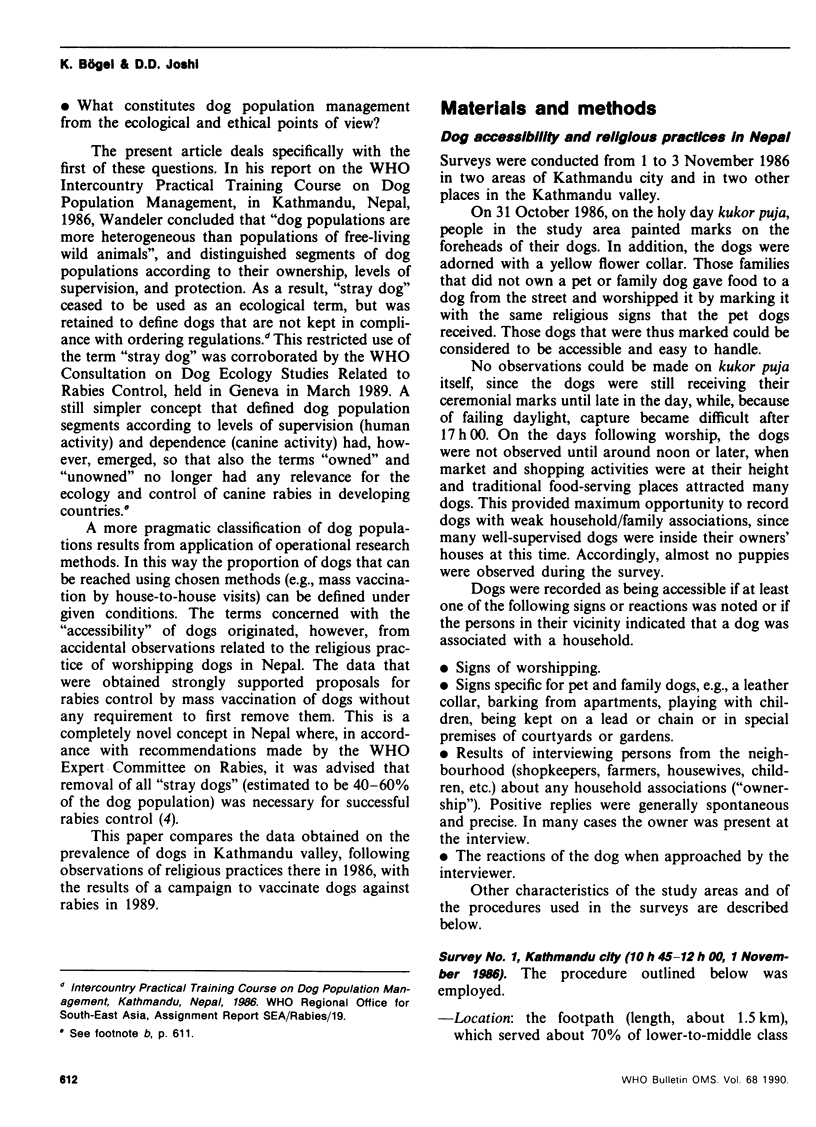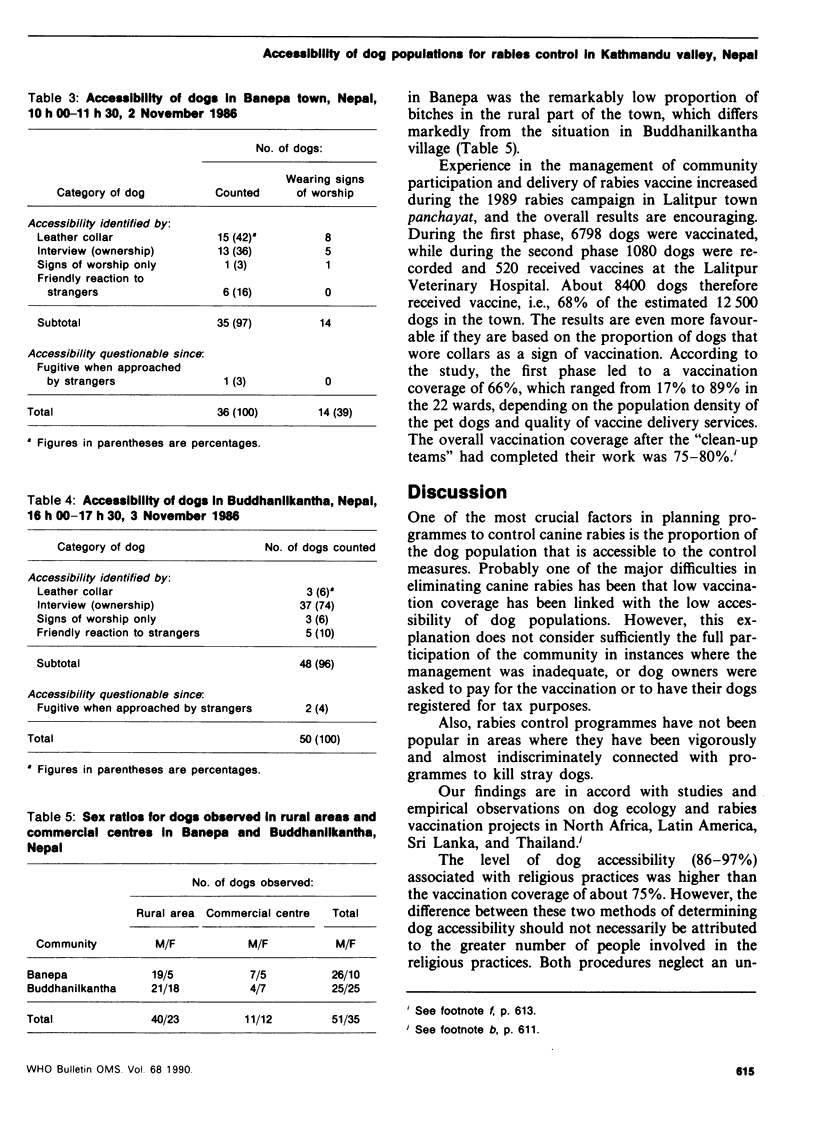Abstract
The accessibility of dogs in urban areas of Kathmandu valley was measured using the following approaches: determination of the proportion of dogs that bore signs of having been the objects of religious worship and other signs of household association, supplemented by information obtained by interviewing people in the neighbourhood; and the vaccination coverage attained in a rabies control campaign that was preceded by intensive activities to encourage the community to participate. An accessibility rate of 90-95% was determined using the first of these approaches, whereas 75-80% of the total dog population was reached in the vaccination campaign.
Full text
PDF






Selected References
These references are in PubMed. This may not be the complete list of references from this article.
- Bögel K., Motschwiller E. Incidence of rabies and post-exposure treatment in developing countries. Bull World Health Organ. 1986;64(6):883–887. [PMC free article] [PubMed] [Google Scholar]
- Steele J. H. Rabies in the Americas and remarks on global aspects. Rev Infect Dis. 1988 Nov-Dec;10 (Suppl 4):S585–S597. doi: 10.1093/clinids/10.supplement_4.s585. [DOI] [PubMed] [Google Scholar]


